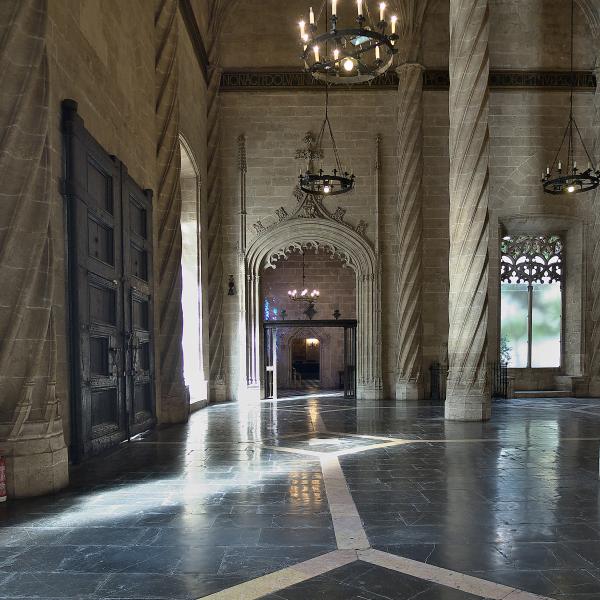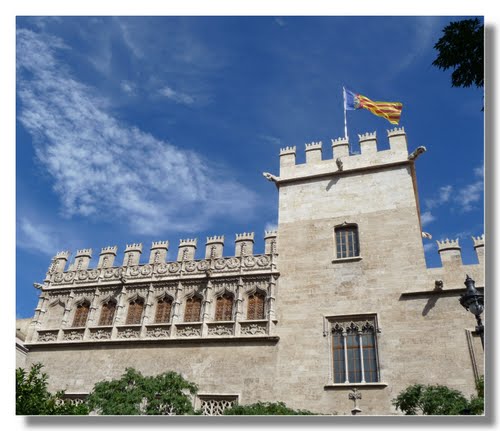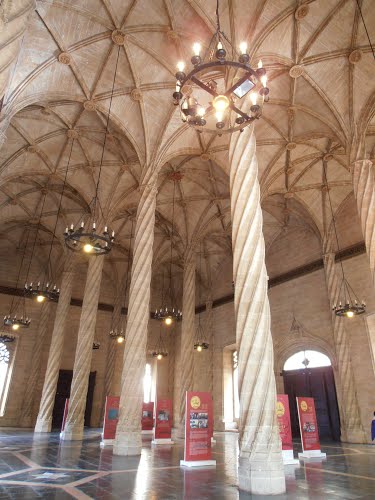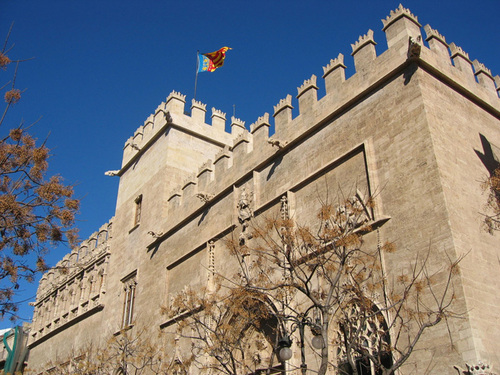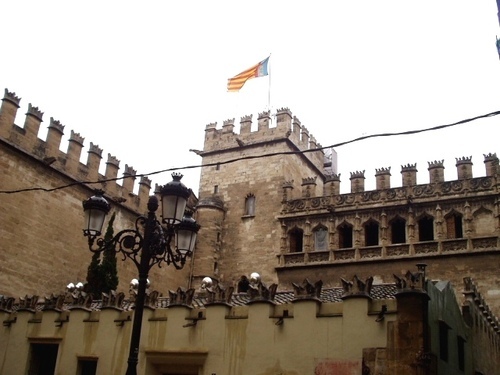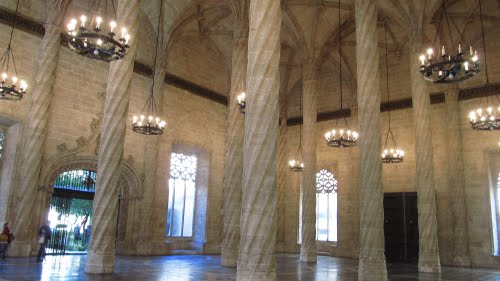The Llotja de la Seda is a late Valencian Gothic-style civil building in Valencia, Spain. It is a principal tourist attraction in the city.
History
Built between 1482 and 1548, la Lonja is composed of three parts. The main hall, Sala de Contratacion is a large lavishly decorated space supported by gorgeous twisted columns. This was the financial centre of La Lonja, where the merchants work out contracts. The side-wing is named the Pavilion of the Consulate, and this was the seat of the Tribunal del Mar - the first marine merchant tribunal to ever be formed in Spain. The first two floors were the main function rooms, with the upper one hosting a richly decorated ceiling. These rooms are still maintain original furnishings. On occasion, the Tribunal would imprison merchants for debts in the central tower of La Lonja - the third part of the structure.
Behind the current building, there was an earlier one from the 14th century, which was called the Oil Exchange. It was used not only for trading with agricultural oils, but for all kind of business. Where in 1348 was traded perxal as some kind of silk.
Valencia's commercial prosperity reached its peak during the 15th century, and led to the construction of a new building.
The design of the new Lonja of Valencia was derived from a similar structure in the Lonja of Palma de Majorca, built by the architect Guillem Sagrera in 1448. The architect in charge of the new Lonja was Pere Compte, who built the main body of the building – the Trading Hall – in only fifteen years (1483–1498). So is written in a blue band that runs along all four walls of the Trading Hall, also called "Hall of Columns".
During subsequent centuries, La Lonja functioned as a silk exchange. The honesty of its traders is honored by the inscription that runs around the main contract hall.
The UNESCO considered it as a World Heritage Site in 1996 since "the site is of outstanding universal value as it is a wholly exceptional example of a secular building in late Gothic style, which dramatically illustrates the power and wealth of one of the great Mediterranean mercantile cities."

